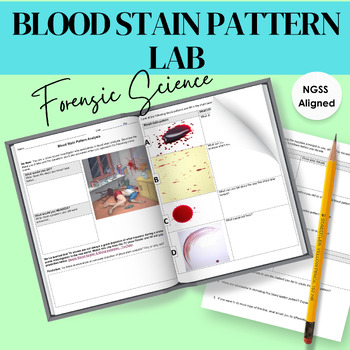Blood Spatter Analysis Lab: Forensics 5E Inquiry Lesson w No Prep Option and CER
- Zip
Description
This forensic science activity works to simulate the process of blood spatter pattern analysis and crime scene reconstruction. This activity goes through the 5E science inquiry model, it is NGSS aligned, and it is EDITABLE.
Students will collaborate with their peers to make observations, ask questions, interpret blood spatter patterns, recreate the blood stain patterns, and develop a CER conclusion. This is an engaging lesson or lab that puts students in the shoes of forensic investigators.
Please note: There is a NO PREP needed option that included engaging videos and a hands-on lab option with supplies needed.
Here are the OPTIONAL supplies:
Bloody mat:
Pipettes
Syringes
Cup of water
Please contact me with any questions! This was one of my students' favorite lessons of the year and I want your students to have the same experience!



